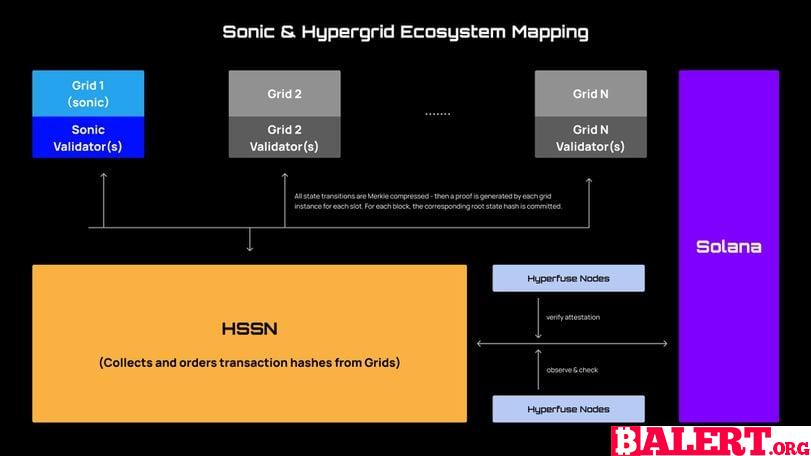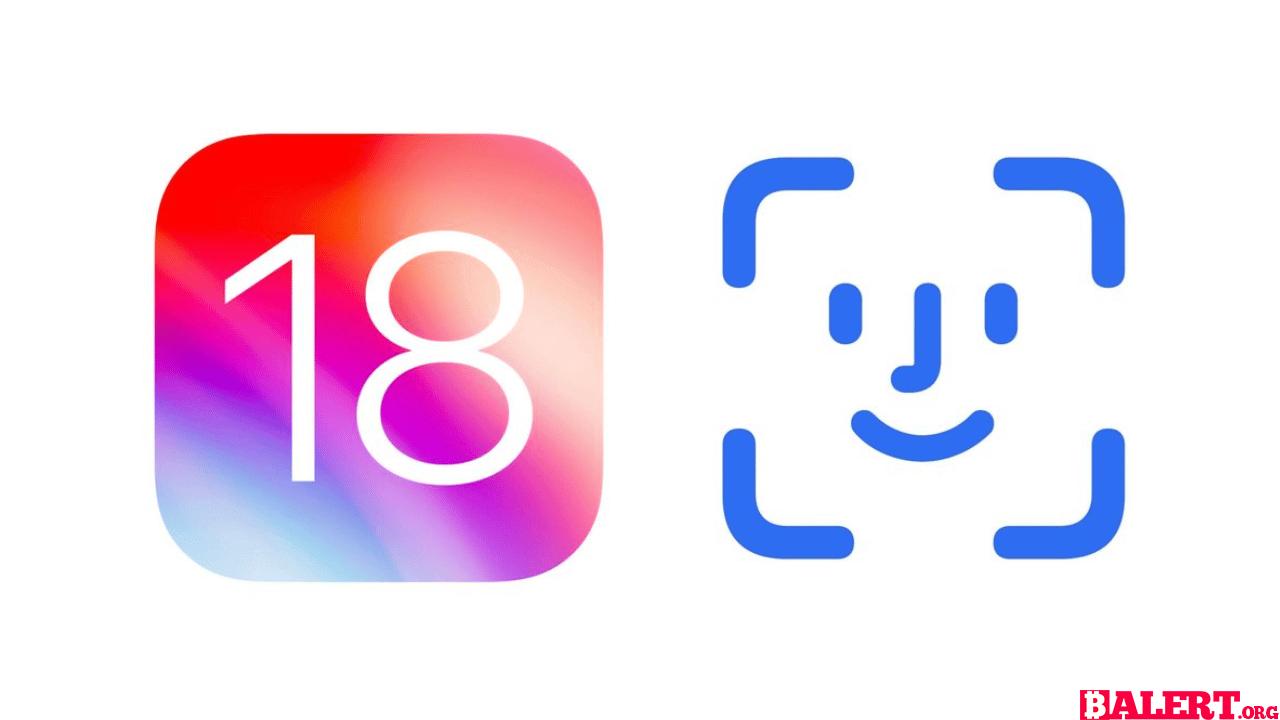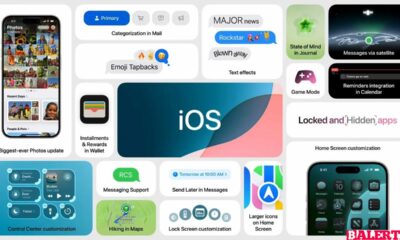Tech
Sonic SVM Launches $12.8 Million Validator Node Sale for HyperGrid Initiative
Sonic SVM announces a groundbreaking $12.8 million validator node sale as part of its innovative HyperGrid Initiative, empowering decentralized networks and enhancing blockchain scalability. Join the future of technology today!

Sonic SVM Launches $12.8 Million Validator Node Sale for HyperGrid

Sonic SVM, an innovative project aimed at enhancing the Solana blockchain to meet gaming-quality speed and throughput, is set to launch a significant sale of validator nodes. This initiative, known as HyperGrid, is a decentralized framework designed to facilitate the development of new application-specific networks. The sale, scheduled for the week of September 16, will be the first of its kind within the Solana ecosystem and will offer 50,000 “Hyperfuse nodes” across 20 distinct pricing tiers, according to the project team. The anticipated proceeds from this sale could reach up to $12.8 million and will be directed into the project’s treasury for various purposes, including bolstering the development team and providing grants, as explained by CEO and co-founder Chris Zhu during an interview.
Node sales have increasingly become a popular method for blockchain projects to generate funds while simultaneously working towards decentralizing their networks. For instance, Aethir, a decentralized GPU cloud infrastructure provider, revealed in May that it successfully raised approximately $126 million in Ethereum’s ether (ETH) token by distributing over 73,000 node licenses. Other notable projects such as Sophon, CARV, XAI Games, and Powerloom have also adopted this strategy to secure fresh funding.
This upcoming sale follows closely on the heels of Sonic SVM’s successful $12 million Series A fundraising round, which was led by Bitkraft and included participation from investors such as Galaxy Interactive and Big Brain Holdings. Buyers of the nodes will not only qualify for token rewards but will also play an integral role in enhancing the security of the HyperGrid network, as highlighted in a recent thread on X.
According to Zhu, “Being a node operator actually allows them to monitor the HyperGrid state, which means they participate in the validation process.” The nodes can be easily configured to operate on personal laptops or cloud servers, making participation accessible.
Understanding Solana’s OP Stack
Within the framework of this project, Sonic SVM is conceptualized as a “grid” that operates on top of a blockchain system referred to as the HyperGrid. This structure ultimately provides the necessary interface for settling transactions on the Solana blockchain. Additionally, the potential exists for the creation of other grids, which could cater to various gaming domains or even facilitate an AI network, according to Zhu’s insights.
Zhu draws a parallel between Sonic SVM’s HyperGrid and Solana’s version of Optimism’s OP Stack, which serves as a popular template for establishing new layer-2 networks on the Ethereum blockchain. A prominent example of this is U.S. crypto exchange Coinbase’s layer-2 project, Base, which is built on this framework.
Layer-2 networks are essential for scaling blockchains, providing an alternative platform for executing faster and more cost-effective transactions than those available on main, layer-1 blockchains. Historically, such structures have not been emphasized as much within the Solana ecosystem, as it is already recognized for its speed and affordability compared to the more expansive Ethereum blockchain.
Moreover, this sale presents a unique opportunity for individuals to acquire Sonic Tokens at a valuation lower than what was offered to top venture capital firms during the recent Series A fundraising. According to a press release from Sonic SVM, “While not officially confirmed, there are possible future airdrops for node operators,” generating additional excitement around this initiative.
Tech
Tesla Semi Fire: NTSB Preliminary Report Released
The NTSB’s preliminary report on the Tesla Semi fire has been released. This content includes important information about the details of the incident, the causes of the fire, and Tesla’s safety measures. Explore the impact on Tesla’s electric vehicles and its future steps.

The National Transportation Safety Board (NTSB) released a preliminary report stating that a Tesla Semi electric truck in California required firefighters to use “50,000 gallons” (approximately 190,000 liters) of water to extinguish a roadside fire. Firefighting teams also deployed an aircraft to drop fire retardant on nearby areas as a precautionary measure to control the fire.
The accident occurred on August 19 at 3:13 AM local time on the I-80 highway east of Sacramento. The electric truck went off the road while navigating a curve, collided with a roadside boundary marker, and then struck a tree, coming to a stop. Fortunately, the driver was not injured in the accident; however, considering their health condition, they were taken to the hospital.
The Tesla Semi’s large 900 kWh battery caught fire upon impact, and toxic smoke began to spread during the fire. While the fire continued with temperatures reaching up to 538°C, firefighters worked intensively to cool the blaze with water. However, due to the fire’s effects, the vehicle continued to burn until late in the afternoon. Meanwhile, Tesla sent a technical expert to the scene regarding fire safety and high voltage hazards.
The highway reopened to traffic at 7:20 PM local time, 16 hours after the accident. The NTSB, as an organization that can only make recommendations and cannot enforce regulations, sent a team to the area for investigation purposes. This major accident raised several issues, including dangerously hot fires and toxic smoke, which will attract the attention of many international organizations.
The NTSB had previously stated in 2021 that fires in the batteries of electric vehicles pose serious risks to emergency response teams and that the guidelines provided by manufacturers for such fires are inadequate.
Tech
New Leaks and Features About the Samsung Galaxy S25 Ultra
Discover the latest leaks and features about the Samsung Galaxy S25 Ultra. Equipped with new technologies and advanced features, this smartphone elevates the user experience to a new level. Check it out for details!

New Leaks About Samsung Galaxy S25 Ultra
Samsung is expected to introduce the Galaxy S25 Ultra along with the Galaxy S25 series at the beginning of 2024, likely in January. Although no official announcement has been made yet, leaks regarding the upcoming flagship continue to spread rapidly on the internet. Notable leak source IceUniverse shared several new visuals of the Galaxy S25 Ultra in a post on the X platform. These visuals reveal the design differences between the Galaxy S25 Ultra and the Galaxy S24 Ultra.
One of the notable features in the leaked images of the Galaxy S25 Ultra is the rounded corners of the phone. In contrast, this year’s Galaxy S24 Ultra has quite sharp corners, which has led to feedback from some users indicating discomfort while holding the device. Previous leaks have suggested that the Galaxy S25 Ultra may be somewhat larger.
A tweet shared by IceUniverse: Galaxy S25 Ultra Image
According to leaks, the Galaxy S25 Ultra is expected to be thinner and lighter compared to previous models. In August, rumors emerged that the upcoming Galaxy S25 Ultra would be lighter than its competitors, with a weight of under 221 grams.
Another image featured in IceUniverse’s post shows close-ups of the sides of both next year’s expected flagship phone and Samsung’s current flagship. In this image, the side of the Galaxy S25 Ultra appears flatter with rounded corners. While these changes may not create a major revolution, they will generally positively affect the feel of the phone in hand.
Looking at other rumors about the Samsung Galaxy S25 Ultra, it is expected that the company will offer top-tier screen and camera upgrades next year. Additionally, there is a strong expectation that the satellite connection feature will also be introduced alongside the Galaxy S25.
Tech
iOS 18 Officially Released: Innovations and Features
iOS 18 has been officially released! This update, packed with new features and innovations, elevates the user experience to the next level. Check out our article for details and discover the new offerings of iOS 18!

iOS 18 Officially Released: Here Are the Innovations!

Apple officially launched iOS 18 yesterday, as promised. After a long beta testing phase, this update brings many exciting new features for iPhone users.

New Features in iOS 18
- Advanced Customization Options on the Home Screen: With iOS 18, users can now arrange app icons freely without sticking to the traditional grid layout. Additionally, there’s an option to change the colors of the icons and adjust their darkness levels. In short, you are no longer bound to a boring layout. It raises questions why Apple waited until 2024 to offer this feature.
- Revamped Control Center: The Control Center is completely redesigned in iOS 18. Users will be able to group controls more comfortably, and developers can easily add controls from their applications. Also, there’s an option to divide the Control Center into pages, allowing different controls on each page.
- RCS Messaging Support: With iOS 18, Apple introduces Rich Communication Services (RCS) messaging support. Users can add various effects to their texts and react with new emojis for more colorful responses.
- Updated Photos App: The Photos app is presented with a new opening page and a modern layout. Users can now browse photos by time, people, and many other criteria, reorder media files, and explore more with the “Collections” feature.
- App Lock Feature: Users can now lock specific applications. For example, they can activate Face ID protection from the menu that appears when long-pressing an app icon. Thus, anyone wanting to open the app will have to pass the Face ID protection first.
- Apple Intelligence: One of the important features of iOS 18 is Apple’s artificial intelligence kit, Apple Intelligence. However, to fully benefit from this feature, you’ll need to wait for the iOS 18.1 update. More information about Apple Intelligence can be found here.
How to Install iOS 18?
- Open the Settings app.
- Tap on General.
- Select Software Update.
- Your iPhone will notify you that the new iOS 18 update is available.
- Click on “Download and Install” and follow the on-screen instructions.
Which iPhone Models Can Install iOS 18?
- iPhone XR, XS, and XS Max
- iPhone 11
- iPhone 11 Pro and 11 Pro Max
- iPhone SE (2nd generation)
- iPhone 12 mini and iPhone 12
- iPhone 12 Pro and iPhone 12 Pro Max
- iPhone 13 mini and iPhone 13
- iPhone 13 Pro and iPhone 13 Pro Max
- iPhone SE (3rd generation)
- iPhone 14 and iPhone 14 Plus
- iPhone 14 Pro and iPhone 14 Pro Max
- iPhone 15 and iPhone 15 Plus
- iPhone 15 Pro and iPhone 15 Pro Max
- iPhone 16
- iPhone 16 Plus
- iPhone 16 Pro and iPhone 16 Pro Max
-

 Business4 months ago
Business4 months agoObituary: Dan Collins
-

 Business3 months ago
Business3 months agoThe Significance of Jackson Hole: A Central Banking Tradition
-

 Gaming5 months ago
Gaming5 months agoMore than a thousand students vowed not to work for Amazon and Google due to the Nimbus Project.
-

 World5 months ago
World5 months agoRussia and North Korea Strengthen Defense Ties
-

 Business5 months ago
Business5 months agoJump Crypto Invests $10 Million in Pro-Crypto PAC
-

 Article5 months ago
Article5 months agoCreative Design Applications Developed with Artificial Intelligence
-

 Tech2 months ago
Tech2 months agoNew Leaks and Features About the Samsung Galaxy S25 Ultra
-

 Gaming5 months ago
Gaming5 months agoThe Inspirational Success Story of Avon’s Founder Who Sold Books Door to Door











